DISTANCE KEEPER


Motor vehicle fatalities in the U.S. by year
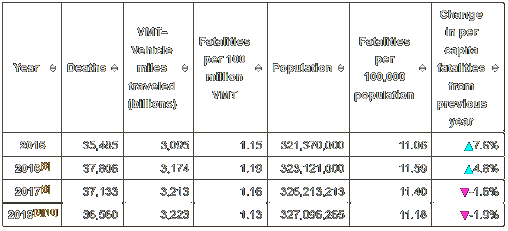
Source: wikipedia
How many of these 36,560 deaths could have been prevented by keeping a safe distance?
Let us go the extra mile and drive the stats down!

Source: wikipedia
How many of these 36,560 deaths could have been prevented by keeping a safe distance?
Let us go the extra mile and drive the stats down!
Thank you...
Perhaps you've never heard the driver in front of you say:"Thank you for
keeping a safe distance!"
Many of us have done wrong by tailgating, and many of us have done
wrong by retaliating, but lets not perpetuate it.
We all want to get to our destinations, but what if we make a mistake and we never make it?
We all want to get to our destinations, but what if we make a mistake and we never make it?
"Better to loose
one second in your life,
than your life in one second."
than your life in one second."

If law enforcement was to address every tailgating infraction, the police
force would not be able to accomplish much else!
We know the law, but that doesn't stop us from tailgating, doesn't that tell us there's something we need to address within ourselves? Instead of helping, we're compounding to the problem.
If there's no much love within you to care for the safety of the passengers of the car in front of you, it might be time to flip the coin in your mind and think, what if it was me and my loved ones inside that car? One mistake is all it takes.
As with many things in life, it is a choice, and we hope you make it a good one. Caring has roots in love, and even though there are times when our love gauge may be low, don't ever forget to guard those joyful moments that await you in the future, arrive home safe and enjoy life well.
Enough scolding already, the matter is as serious as pain; and as understanding adults, we need to begin changing our selfish habits, tragedy is around the corner if we look for it.
We know the law, but that doesn't stop us from tailgating, doesn't that tell us there's something we need to address within ourselves? Instead of helping, we're compounding to the problem.
If there's no much love within you to care for the safety of the passengers of the car in front of you, it might be time to flip the coin in your mind and think, what if it was me and my loved ones inside that car? One mistake is all it takes.
As with many things in life, it is a choice, and we hope you make it a good one. Caring has roots in love, and even though there are times when our love gauge may be low, don't ever forget to guard those joyful moments that await you in the future, arrive home safe and enjoy life well.
Enough scolding already, the matter is as serious as pain; and as understanding adults, we need to begin changing our selfish habits, tragedy is around the corner if we look for it.
Therefore keep a
safe distance!
It's up to you!
It's up to you!
Safe Distance
The safest
distance is the one that allows you to calmly react to most road
dangers. The desired level of safety won't take place without
your action, factors to consider:
Mental capacity,
alertness, reaction time, car weight, road conditions, mechanical
limits, visibility, etc
Your
reaction time is key, but it doesn't have to be, think of your reaction
time
as cash, and distance as savings, the more distance you put between
your car and the car in front of you, the more time you'll have to
react, therefore placing the proper distance is key, which yields a safer
driving
experience, plus it isn't fun to run out of cash!
Your reaction time depends on your capacity also, which only you can properly estimate, if your capacity to estimate the safe distance is impaired, then you will pose a risk to all the other drivers on the road, and this isn't cool either.
The hope of this page is to bring awareness, there are drivers that have the capacity to dicern a safe distance, yet they choose otherwise, but we all need to be mindful that there's a fine line between recklessness and criminality.
Your reaction time depends on your capacity also, which only you can properly estimate, if your capacity to estimate the safe distance is impaired, then you will pose a risk to all the other drivers on the road, and this isn't cool either.
The hope of this page is to bring awareness, there are drivers that have the capacity to dicern a safe distance, yet they choose otherwise, but we all need to be mindful that there's a fine line between recklessness and criminality.
"Don't let the
lights
of your car shut off faster than they came on when you started driving
today. It
is
truly dark past the point of tragedy!"
There have been several
standards in the past to help the driver discern a safe distance, but
as mentioned prior, judge your capacity, I once was told, "you're
driving too slow", my answer was, "I can only drive as fast as I can
process the road", granted many people can process the road much faster
than me, but the faster we go, the narrower our reaction time becomes.
My favorite guide is the 1 car distance for every 10 miles per hour, so I just look at the speedometer and whatever number I see, that's the number of cars I should use as a guide for keeping a safe distance (ignore the zero). So if I am going 65 mph, I know that 7 cars should fit between my car and the car in front of me.
My favorite guide is the 1 car distance for every 10 miles per hour, so I just look at the speedometer and whatever number I see, that's the number of cars I should use as a guide for keeping a safe distance (ignore the zero). So if I am going 65 mph, I know that 7 cars should fit between my car and the car in front of me.

There's also the 3 second rule, which prompts you to look for a fixed object that's parallel to the car in front
of you and count 1001, 1002,
1003 until you pass that object, the logic is that if you pass the
object before you count 1003, you're following too close.
It is my understanding that there was a 2-second rule in place, but it wasn't working, so the 3-second rule was put in place, now there are some sites online that advocate a 4-second rule, nothing wrong with that, seems safer!
Adjusting to the flow of traffic is good, looking far ahead is good, considering weather conditions is good, road conditions, etc, they're all good to keep in mind; it can be somewhat overwhelming to the new driver, but rehearsing them mentally when driving can shape you into a safe driver.
Now, following these guides require you to be careful, glance at the speedometer or at the fixed object, but keep your eyes on the road, this is the same process as if you were looking through your rearview mirrors.
If you think you may not have enough time to react, you're probably right, slow down a little bit, put more distance between your car and the car in front of you, it is as simple as that.
It is my understanding that there was a 2-second rule in place, but it wasn't working, so the 3-second rule was put in place, now there are some sites online that advocate a 4-second rule, nothing wrong with that, seems safer!
Adjusting to the flow of traffic is good, looking far ahead is good, considering weather conditions is good, road conditions, etc, they're all good to keep in mind; it can be somewhat overwhelming to the new driver, but rehearsing them mentally when driving can shape you into a safe driver.
Now, following these guides require you to be careful, glance at the speedometer or at the fixed object, but keep your eyes on the road, this is the same process as if you were looking through your rearview mirrors.
If you think you may not have enough time to react, you're probably right, slow down a little bit, put more distance between your car and the car in front of you, it is as simple as that.
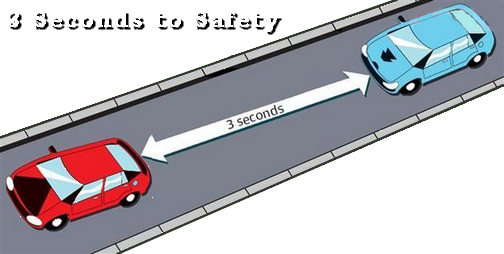
Add Variables
Perhaps you've been driving for a long time, but have never come
across a specific situation, rather than trying to remember every
single factor when tailgating, why not just keep a safe distance and be
done with it, isn't that easier?
Weight
It takes almost twice as much distance for a heavy truck to stop when compared to an average car. You might be able to stop your car in a tailgating situation, but will the truck behind you be able to do so as well? Keeping a safe distance on your part regulates the vehicle that follows you.
Rain
Lack of visibility and poor road traction are not elements to relax about, when combined with reckless driving and perhaps worn out tires, rain can certainly work against you if you're tailgating, be alert, drive safely!
Ice and heat can impact not only the way you drive, but also the driving of those close to you, that's one of the reasons why it is wise to keep a safe distance, perhaps it's time to re-think what your new safe distance standard should be.
Weight
It takes almost twice as much distance for a heavy truck to stop when compared to an average car. You might be able to stop your car in a tailgating situation, but will the truck behind you be able to do so as well? Keeping a safe distance on your part regulates the vehicle that follows you.
Rain
Lack of visibility and poor road traction are not elements to relax about, when combined with reckless driving and perhaps worn out tires, rain can certainly work against you if you're tailgating, be alert, drive safely!
Ice and heat can impact not only the way you drive, but also the driving of those close to you, that's one of the reasons why it is wise to keep a safe distance, perhaps it's time to re-think what your new safe distance standard should be.
Double
tailgating
Since the car in front of you might be obstructing your view, it could be that this car is also tailgating, at this point you're depending on his/her reaction time, and you may never see the car in front of you breaking should there be an accident or a dangerous object on the road.
"awareness when translated into action,
has the power to break cycles!"
The other driver
We see cars, but each car is driven by someone, consider what that person's status might be, tired, depressed, drunk, on drugs, angry, etc. therefore, considering all the factors and the potential volatility of the driver in front of you, it sure seems wise to keep a safe distance.
Since the car in front of you might be obstructing your view, it could be that this car is also tailgating, at this point you're depending on his/her reaction time, and you may never see the car in front of you breaking should there be an accident or a dangerous object on the road.
"awareness when translated into action,
has the power to break cycles!"
The other driver
We see cars, but each car is driven by someone, consider what that person's status might be, tired, depressed, drunk, on drugs, angry, etc. therefore, considering all the factors and the potential volatility of the driver in front of you, it sure seems wise to keep a safe distance.
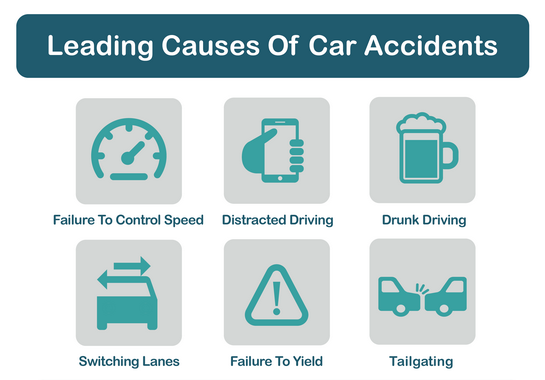
Perhaps
tailgating can be compared to smoking, most items you approach won't
react to your smoking, except flammables and the building up of cancer
in people
around you; tailgating creates a cancer on the road, a destructive
hatred. Ask yourself, is this part of my contribution besides recycling?
Not to mention the fact that just like it's not a good idea to approach a gas tank while you're smoking, it's not a good idea to tailgate a highly reactive driver, so if we don't know tempers, why push the boundaries, awareness when translated into action, has the power to break cycles!
Not to mention the fact that just like it's not a good idea to approach a gas tank while you're smoking, it's not a good idea to tailgate a highly reactive driver, so if we don't know tempers, why push the boundaries, awareness when translated into action, has the power to break cycles!
Who's the victim?
If you know that keeping a safe distance can prevent an accident, yet
you still do it and an accident happens; can it still be consider an
accident? or a criminal offence?
It's a fine line, and many of us cross it at some point or another, but if an accident takes place, there's not turning back, and the law, as well as your conscience can label it as an accident or a crime.
In the case of a crime, the offender becomes the victim as well, a victim of his own actions, nobody wins in these situations, the best thing is for every one involved to make best efforts in diffusing the situation before it becomes either, a crime or an accident.
We focus for the most part on the offender, the tailgater, for it is certainly an offence, but what if the other driver is too slow? A tailgating car can slow down, we know this by logic, but a slow car can have mechnical limitations, or the driver may not be up to driving capacity.
Now consider this, if you're tailgating a slow car, particularly on backroads, beware of malicious people, what I mean is that the slow car can bring you to a stop quickly by suddently pressing the brakes, you may not hit the car, but in the meantime the car behind you can quickly block you, this can happen in a matter of seconds without your realizing it.
The situation above can put you or your passengers in great danger, another great reason to keep your distance, certainly something to think about.
And since we're talking about this kind of offences, I'd like to mention to armour yourself as well with parking-lot safety habits; there have been situations in which a person is persuaded to get out of the car (particularly at night) after the car has been turned on and upon checking rear view mirrors, you notice someone placed an object on the car, perhaps a bottle on the tire, or whatever, this prompts the driver to get out and remove the object, this gives criminals the opportunity to either drive away with your car (since you turned it on), steal your belongings or even worse, hurt you.
The point here is for you to be safe, check sourroundings as you approach your car, perhaps do a quick scan around your car, checking particularly around your tires; then get in, lock your car and drive away, don't waste time, look out for your safety, you don't have to be a victim when you have the truth.
If we come to believe that life is to be preserved, perhaps we can develop an all terrain behaviour, where we learn to compensate in different situations and scenarios, after all a lot of it can depend on our behaviour, on how we handle things, if people can put up with us, why can't we put up with people; this alone can help us diffuse issues, remember that being mindful is not a one way street.
It's a fine line, and many of us cross it at some point or another, but if an accident takes place, there's not turning back, and the law, as well as your conscience can label it as an accident or a crime.
In the case of a crime, the offender becomes the victim as well, a victim of his own actions, nobody wins in these situations, the best thing is for every one involved to make best efforts in diffusing the situation before it becomes either, a crime or an accident.
We focus for the most part on the offender, the tailgater, for it is certainly an offence, but what if the other driver is too slow? A tailgating car can slow down, we know this by logic, but a slow car can have mechnical limitations, or the driver may not be up to driving capacity.
Now consider this, if you're tailgating a slow car, particularly on backroads, beware of malicious people, what I mean is that the slow car can bring you to a stop quickly by suddently pressing the brakes, you may not hit the car, but in the meantime the car behind you can quickly block you, this can happen in a matter of seconds without your realizing it.
The situation above can put you or your passengers in great danger, another great reason to keep your distance, certainly something to think about.
And since we're talking about this kind of offences, I'd like to mention to armour yourself as well with parking-lot safety habits; there have been situations in which a person is persuaded to get out of the car (particularly at night) after the car has been turned on and upon checking rear view mirrors, you notice someone placed an object on the car, perhaps a bottle on the tire, or whatever, this prompts the driver to get out and remove the object, this gives criminals the opportunity to either drive away with your car (since you turned it on), steal your belongings or even worse, hurt you.
The point here is for you to be safe, check sourroundings as you approach your car, perhaps do a quick scan around your car, checking particularly around your tires; then get in, lock your car and drive away, don't waste time, look out for your safety, you don't have to be a victim when you have the truth.
If we come to believe that life is to be preserved, perhaps we can develop an all terrain behaviour, where we learn to compensate in different situations and scenarios, after all a lot of it can depend on our behaviour, on how we handle things, if people can put up with us, why can't we put up with people; this alone can help us diffuse issues, remember that being mindful is not a one way street.
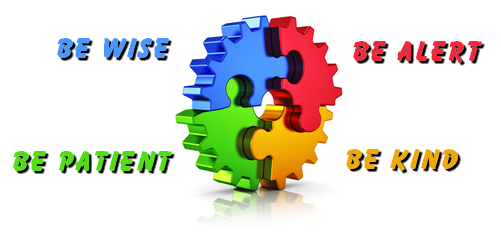
If there's more than one gear in our minds, perhaps we can switch
them when needed; at the end of the day, no one wins, but the offender
will always lose, and that makes us all victims if we don't learn to
diffuse or switch gears.
Gear up, drive with kindness and precision!
Diffuse tailgating
Here
are some tips on how to handle tailgaters, remember the goal here is
safety, the preservation of life, yours and yes, the life of the
offender also.
Move over safely, signal first, let them pass you.
Check the speed limit, perhaps you're moving slow.
Don't retaliate in any way, that includes hand gestures.
Reduce speed a bit by depressing accelerator.
Look out not only for your safety, but their safety also.
Never stop or get out of the car to engage the offender.
Bring awareness, what you don't know can also hurt you.
It doesn't sound fair, but just let them have the road, this is
something you will never regret doing, life is too precious.
Be disciplined in your driving, even if no cars are around, use your signals, make it a habit, take care of the condition of your car, be intentional about safety, reckless driving is always regreteable.
Be disciplined in your driving, even if no cars are around, use your signals, make it a habit, take care of the condition of your car, be intentional about safety, reckless driving is always regreteable.
Advantages
Getting someone to understand the value of life is not easy, much less
to have them act upon it accordingly.
Nevertheless, as mentioned before, most of the advatage is in the intrinsic value of life and everything that it encapsulates, love is the root of life preservation and the main regulator, take love out of the equation and all you get is a life that looks like a car without a gas tank.
Therefore, unless we pay attention to what love is and its practical application, we're never going to fix our tailgating problem, or any other problem for that matter.
We need to put into practice the knowledge that people will always be more important than things, and that includes money; it's only then that we can get to see the real advantage, easier said than done, but with God all things are possible.
Beyond the intrinsic benefits of safe driving, there's the tangible advantages, it's up to the reader to calculate the cost, but even from a financial perspective it makes sense not to tailgate.
Nevertheless, as mentioned before, most of the advatage is in the intrinsic value of life and everything that it encapsulates, love is the root of life preservation and the main regulator, take love out of the equation and all you get is a life that looks like a car without a gas tank.
Therefore, unless we pay attention to what love is and its practical application, we're never going to fix our tailgating problem, or any other problem for that matter.
We need to put into practice the knowledge that people will always be more important than things, and that includes money; it's only then that we can get to see the real advantage, easier said than done, but with God all things are possible.
Beyond the intrinsic benefits of safe driving, there's the tangible advantages, it's up to the reader to calculate the cost, but even from a financial perspective it makes sense not to tailgate.
Here are some of those tangible benefits:
Windshield care
Driving too close exposes your windshield more to little rocks, or road debri slung at high speeds from the car in front of you, and if it happens to be a truck, the pebble may very well go through your windshield.
Don't miss your exit
Driving too close to a truck reduces your visibility and you may miss traffic lights and other road signs, even those that might be critical, increase your visibility.
Tires and overall car care
Driving too close limits your reation time, pot-holes can potentially damage your car, the driver in front of you may be able to dodge an item on the road, but you may not if there's not enough distance in between cars to react quickly.
Good health
Not only aggressive driving can lead to crashes, but also affect your health and the health of others, stress, high blood pressure, whenever you tailgate you're attacking the health of the other driver, could be grandma on her way to the doctor, she'll beat you up boy!
Bank account
Accidents are expensive, violation tickets can trigger higher insurance rates, fuel costs increase with reckless driving, consider also car repairs, and the list goes on, is it worth it?
Driving too close exposes your windshield more to little rocks, or road debri slung at high speeds from the car in front of you, and if it happens to be a truck, the pebble may very well go through your windshield.
Don't miss your exit
Driving too close to a truck reduces your visibility and you may miss traffic lights and other road signs, even those that might be critical, increase your visibility.
Tires and overall car care
Driving too close limits your reation time, pot-holes can potentially damage your car, the driver in front of you may be able to dodge an item on the road, but you may not if there's not enough distance in between cars to react quickly.
Good health
Not only aggressive driving can lead to crashes, but also affect your health and the health of others, stress, high blood pressure, whenever you tailgate you're attacking the health of the other driver, could be grandma on her way to the doctor, she'll beat you up boy!
Bank account
Accidents are expensive, violation tickets can trigger higher insurance rates, fuel costs increase with reckless driving, consider also car repairs, and the list goes on, is it worth it?
Keeping a safe distance is in your best interest, this is a key element
for safe driving, even more so than reaction time.
Many of the tangible benefits quickly transcend into intrinsic benefits, goes to show that if we are faithful with little, we'll be given more!
Many of the tangible benefits quickly transcend into intrinsic benefits, goes to show that if we are faithful with little, we'll be given more!
Uproot tailgating
For many
the issue is not that they want to tailgate, it simply is that they're
running late or the driver in front of them is driving too slow or they
learned the behaviour on the road.
If you're running late frequently perhaps a re-structuring of your schedule can take place, I know from experience this won't happen overnight, but you can work towards it, I can't say much on this area since most people are better than me at managing time.
Going to bed late can be a catalyst for running late, eating a big meal or dairy before going to bed can have a negative impact on your wake up time, discipline and capacity are key elements to get a grip on your scheduling; I struggle too.
We don't wake up in the morning thinking about our contribution to road safety, but if we use our commute as a disposable tool, it's only a matter of time before the tool breaks down.
We need to make a conscious and intentional effort to include our driving into the high-standards area of our lives, it takes work and patience, but there are plenty of tools to uproot this problem, after all, we all want to get home safe.
If you're running late frequently perhaps a re-structuring of your schedule can take place, I know from experience this won't happen overnight, but you can work towards it, I can't say much on this area since most people are better than me at managing time.
Going to bed late can be a catalyst for running late, eating a big meal or dairy before going to bed can have a negative impact on your wake up time, discipline and capacity are key elements to get a grip on your scheduling; I struggle too.
We don't wake up in the morning thinking about our contribution to road safety, but if we use our commute as a disposable tool, it's only a matter of time before the tool breaks down.
We need to make a conscious and intentional effort to include our driving into the high-standards area of our lives, it takes work and patience, but there are plenty of tools to uproot this problem, after all, we all want to get home safe.
Statistics
Although
statistics can sometimes paint a better picture, the reality of the
problem is obvious for those who experience the frustrations of people
tailgating.


We can do a lot better Florida...
Let's drive the stats down!
Let's drive the stats down!
Tragedies
Can a tragedy be avoided? It is a choice, your choice!
Even
though some of these videos tell the story very clearly, nothing will
speak to you better than your own conviction, some people won't
acknowledge the level of danger that tailgating implies until tragedy
strikes, don't let it get to that point, the choice is in your hands,
make it a good one!
Althought this following video is somewhat lenghty, consider the many
lessons you can glean from it, reflect upon the video as you spend 18
minutes, not in the mist of tragedy on a cold day away from home, but in the comfort of your home, these
are real people.
We need to learn to treasure life back again with our
actions, to what degree could tragedy have been prevented here?
The next video gives a glimpse into perhaps how much distance it
takes for a heavy truck to come to a stop, although I'm not sure if the driver was making an effort at doing so.
On the next video, notice how close the driver that had the accident
was to the white pickup truck in front of him, leaving no room for
reaction time, by the time he hits the brakes, it was too late, I think
four cars were affected, don't know how many people total, all caused
by one person who did not leave enough room for reaction time, poor driving.
Althought this website is mainly about tailgating, I cannot, in good
faith be talking all about tragedy prevention and leave you without the
knowledge that our souls are in a much greater danger, the danger of tragedy
without Christ Jesus, I've read of Him in the Bible and came to believe He is the way to our true home.
You see, the body we sport on this earth for less than a century (for most), is like a car, we are to take care of it, but the important thing is how we drive it on the road of life.
You see, the body we sport on this earth for less than a century (for most), is like a car, we are to take care of it, but the important thing is how we drive it on the road of life.
John 14:6 Jesus saith unto him, I am the way, the truth, and the life: no man cometh unto the Father, but by me.
I respect your choice, but I believe we all need to be mindful about
the way we conduct our lives, consequences apply there as well, perhaps even more, given the value of a soul.
The following picture is from our accident a few years ago, which I include here as part of my testimony, I called upon the Lord Jesus after the impact, and truly believe He carried us through from that point forward.
The offender was being chased by the police and we were moving away from a traffic light, about 25 mph giver take, when we were hit. This wasn't tailgating, but it does hightlight how dark hearts can get in terms of disregarding life, even their own life.
The following picture is from our accident a few years ago, which I include here as part of my testimony, I called upon the Lord Jesus after the impact, and truly believe He carried us through from that point forward.
The offender was being chased by the police and we were moving away from a traffic light, about 25 mph giver take, when we were hit. This wasn't tailgating, but it does hightlight how dark hearts can get in terms of disregarding life, even their own life.
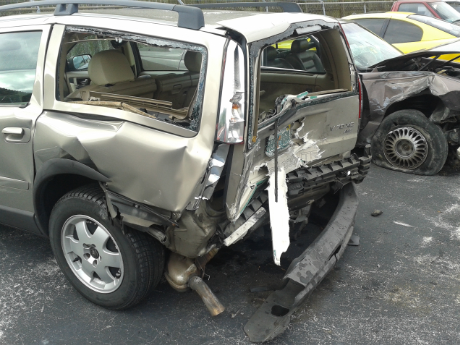
Self-driving
cars
Why bother being kind to people when self-driving cars are around the
corner? Being kind to people should be embedded into our being, its part of our treasure; plus
self-driving cars are not ready yet, nor can we afford them. :-)
"Will they need
Microsoft patches?
...Reboot!"
...Reboot!"
And even though the technology seems promising and makes good sense
from many different angles, we all still need to polish our skills when
communicating one another; isn't that light-signal used to communicate
with other cars?
If much of our technology is based on signals and sensors, how come we cannot adapt "Kindness" as our mode of operation when communicating, people sense too.
Lets take advantage of our driving years to sharpen our car to car communication skills; I wonder if we will miss that turn signal clicking noise one day?
If much of our technology is based on signals and sensors, how come we cannot adapt "Kindness" as our mode of operation when communicating, people sense too.
Lets take advantage of our driving years to sharpen our car to car communication skills; I wonder if we will miss that turn signal clicking noise one day?
The video above makes good technological sense, and even though the
hype may blinds us from seeing the negative aspects, there are many to
consider. By the way (in reference to the end of the video) I don't condone, nor believe that man is
or ever was a monkey, even if some act like it, I believe the evolution "theory" has gone bananas.
The simulation below depicts one of those ways we can improve our
driving, I'm not too fond of it, given that it may not be safely
applied in all situations. To me, it accurately depicts what
takes place when someone sees something amusing on the road and slows
down, perhaps we ought to take a quick glance and keep our speed; if
it's not something that requires a slow down, keep on moving.
Now What?
That's
it! You know... many good things in life leave an
after-silence; many
years coming home from work in that old car, I close the door and hear
the silence. There was no orchestra celebrating my arrival,
but
that's okay, I try to teach myself to celebrate those moments, and
within me I thank the Lord Jesus for bringing me home safe, for
bringing my wife home safe. So at the end of the day, the
value
of safety is intrinsic. You may not have heard the driver in front
of you say "Thank you for keeping a safe distance", but it does not
mean it never took place, not only from that person, but perhaps from
their little ones that understand the value of life in their own
way. Isn't it worthed to love one another in practical ways?
"Better to hear the
silence of un-eventful
than the noise of irrevesible tragedy!"
than the noise of irrevesible tragedy!"
If you happen to believe that awareness of the tailgating problem
can be passed through a "Distance Keeper" car sticker, order one or more to share today, see details below.
How can a sticker help?
The "Distance Keeper" sticker is not intended to be aggressive, instead it appeals to the understanding of abstract yet inoffensive language, two easy to remember words, coupled with an image that conveys and encourages safety.
1. Potentially prevent tailgating.
The sticker was designed to be easily seen at a certain distance, and to indirectly prompt the approaching driver to place a safe distance, that's the hope.
2. Prompts the tailgating driver to stop the unwanted action.
The "Distance Keeper" sticker can be clearly seen at a close distance, again, the idea is not to demand, but to encourage the driver through his understanding to be a distance keeper.
How can a sticker help?
The "Distance Keeper" sticker is not intended to be aggressive, instead it appeals to the understanding of abstract yet inoffensive language, two easy to remember words, coupled with an image that conveys and encourages safety.
1. Potentially prevent tailgating.
The sticker was designed to be easily seen at a certain distance, and to indirectly prompt the approaching driver to place a safe distance, that's the hope.
2. Prompts the tailgating driver to stop the unwanted action.
The "Distance Keeper" sticker can be clearly seen at a close distance, again, the idea is not to demand, but to encourage the driver through his understanding to be a distance keeper.
3. Brings general awareness of the tailgating problem
The words "Distance Keeper" are easy to read and to remember, the silhouette image is also easy to distinguish.
These are key elements to bring awareness, the hope is to convert a tailgater into a safe driver, this website works in tandem with the "Distance Keeper" sticker, but it is ultimately up to the driver to realize the importance of keeping a safe distance, not every driver will respond the same.
The sticker and the website are hope actions, unfortunately we cannot garantee either will work, remember tailgaters have free will, just like you have the free will to be a distance keeper.
The words "Distance Keeper" are easy to read and to remember, the silhouette image is also easy to distinguish.
These are key elements to bring awareness, the hope is to convert a tailgater into a safe driver, this website works in tandem with the "Distance Keeper" sticker, but it is ultimately up to the driver to realize the importance of keeping a safe distance, not every driver will respond the same.
The sticker and the website are hope actions, unfortunately we cannot garantee either will work, remember tailgaters have free will, just like you have the free will to be a distance keeper.
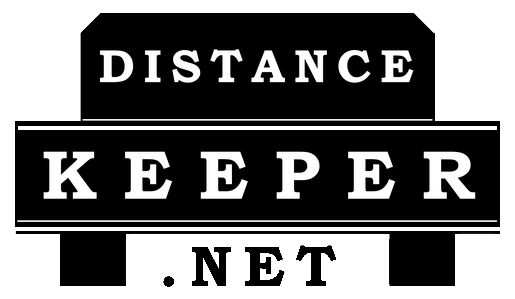
This is what the sticker looks like, corners are rounded and actual size is approx. 7-1/2 x 4-1/4, glossy surface.
You may order your "Distance Keeper" sticker through our
ETSY STORE
Thank you for your purchase and supporting DistanceKeeper.net to bringing awareness about this issue!
For questions / concerns, send an email to:

ETSY STORE
Thank you for your purchase and supporting DistanceKeeper.net to bringing awareness about this issue!
For questions / concerns, send an email to:

Enjoy the
drive...
Speed
limits and road signs are designed for human comfort and efficiency.
When obeyed, they can yield a better driving experience, for
your
neighbor and for yourself.
The goal of many traffic laws is to preserve life, but they cannot work towards that goal without your cooperation, thank you for keeping a safe distance!
There's safety in enjoying the drive, not your right of way, but the right way! Remember, the excellence of your driving is love towards your neighbor, and that's how we drive the point home!
The goal of many traffic laws is to preserve life, but they cannot work towards that goal without your cooperation, thank you for keeping a safe distance!
There's safety in enjoying the drive, not your right of way, but the right way! Remember, the excellence of your driving is love towards your neighbor, and that's how we drive the point home!

More resources
There
are many other resources for those who feel encouraged to learn more
about safe driving, after all, who says you cannot drive with
excellence, or be driven by it?
If you're interested on brushing up on your driving skills even more, I'd recommend getting a copy of the DMV driver's manual in your area, plus see if they have a defensive driving video, I remember watching one many years ago and years later came to appreciate the things I learned from it.
If you're interested on brushing up on your driving skills even more, I'd recommend getting a copy of the DMV driver's manual in your area, plus see if they have a defensive driving video, I remember watching one many years ago and years later came to appreciate the things I learned from it.
wikiHow has a useful how-to on how to handle tailgaters on the road.
The National Traffic Operations Centre of England on the dangers of tailgating: Driving isn't a game, space invader!
Thank
you for visiting, if this site impacted your driving conduct in a
positive way, perhaps sharing it with someone may help that person too.
Also, please email me if you like to share your experience with the content of this site or if you like to share a resource that I may consider putting here.
I do realize the page is rather long, perhaps you may have a recommendation on what could be trimmed and/or added, the idea is not just to be eloquent in transmitting the message, but effective in communicating awareness. Thanks again!
Also, please email me if you like to share your experience with the content of this site or if you like to share a resource that I may consider putting here.
I do realize the page is rather long, perhaps you may have a recommendation on what could be trimmed and/or added, the idea is not just to be eloquent in transmitting the message, but effective in communicating awareness. Thanks again!
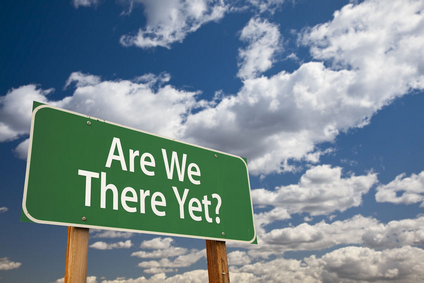
Be Blessed!

